One of the most influential designers of the mid-20thcentury
Gio Ponti(1891 - 1979)是一个poet, painter, industrial designerand founding editor ofDomusmagazineas well as an architect. Through his designs and his work atDomus, he was the godfather of Italy’s post-war design renaissance.
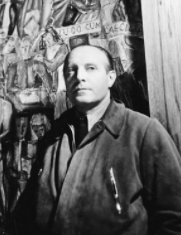
Image source:https://www.wright20.com/auctions/2015/06/design/248
Gio Pontihelped to establish Italy as a global design center through a diverse career that spannedarchitecture, industrial design, art, and even publishing. However, his career might never have begun if history had intervened only a bit more. Born and raised inMilan,Pontidecided upon a career in architecture as a young man and enrolled in in the architecture program atPolitecnico di MilanoUniversity.
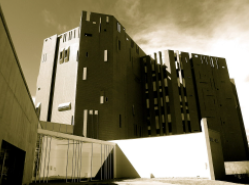
Image source:https://search.creativecommons.org/photos/fd3fa86f-653b-4fed-9ff8-60c4208bf21abyIshrona
What are the main architectures of Gio Ponti?
Pontibegan his architectural career in partnership withMino FiocchiandEmilio Lanciafrom 1923 through 1927, and then through 1933 with Lancia only, asStudio Ponti e Lancia PL. In these years he was influenced by and associated with the Milanese neo-classicalNovecento Italiano movement.Output of the time includes the 1925 house on Via Randaccio in Milan, the 1926 Bouilhet villa in Garches, Paris, the 1929Monument to the Fallenwith the Novecento architect Giovanni Muzio, theCasa Rasiniapartment blocks in Milan, and the 1930Domus Julia–Domus Fausta complex on Via Letizia. Around 1933, Ponti ended his relationship with Lancia and teamed with two engineers,Antonio FornaroliandEugenio Soncini, to formStudio Ponti-Fornaroli-Sonciniwhich would last until1945. Their first major commission was the 1936 company headquarters for the Italian chemical firm Montecatini, followed by a number of other industrial and university commissions through the war years, offices forFiat, and thePalazzo del Livianofor the University of Padua in which Ponti himself painted frescos. Ponti in 1950 won the commission to design the 32-storyPirelli Towerin collaboration withPier Luigi NerviandArturo Danusso. This was the second skyscraper built in Milan, and likely the climax of Ponti’s entire career. Construction began in1956.
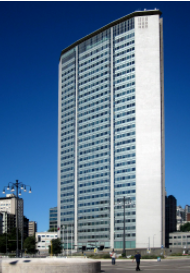
Image source:https://search.creativecommons.org/photos/27aea493-c5a7-4723-94bf-9cf85da5ce4a,IK’s World Trip
What was Domus?
In1928, Ponti startedDomus, an architecture and design magazinethat would allow him to express his ideas regarding the artistic movement,Novecento, and also to show-case the best ofItalian design. Ponti is famous for having been a major part of theNovecento, a counter-movement toRationalism. Followers of Novecento were interested in creating art that expressed the ideas ofFascism. Their goal was to revive the traditional and classical art ofItaly, and reject the European Avant Garde Movement.Domus成为最influentia之一l magazines inEurope. From 1941 to 1947,PontileftDomusto found a new magazine calledStile. In his absence, the direction of the magazine had changed to advocate rationalist ideas. Upon his return,PontiredirectedDomusdispl,并使用它作为一个场地ay his favorite designers.
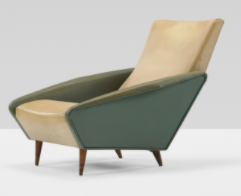
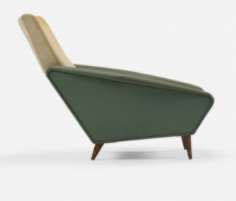
Images source:https://www.wright20.com/auctions/2015/06/design/248
Which are the main works of Gio Ponti?
In1923Pontimade his public debut at the firstBiennial Exhibition of the Decorative ArtsinMonza, which was followed by his involvement in organising the subsequentTriennial Exhibitions of MonzaandMilan. From 1923 to 1930 Ponti worked at theManifattura CeramicaRichard Ginori, inMilanandSesto Fiorentino, changing the company’s whole output. Other industrial design work includes:
- a line of furnishings for theRinascentedepartment stores, under the nameDomus Nova
- ceramic objectsproduction:maiolica vases, porcelain, sanitaryware(like sinks and toilets (e.g. those created forRichard GinoriandIdeal Standard)
- chairs: among others, he worked forCassinadesigning an angular armchair, named “Distex“, and the very famous 1957 “Superleggera” (Superlight) chair, which was very strong but also so light that it could be lifted up by a child using just one finger. Also very famous is the “Due Foglie” sofa.
- glass bottles: he designed stylish, colourful glass bottles for various companies such asVenini.
- lamps: for companies such asArtemide,Fontana Arte, andVenini, he created two types of lamps- those provided with veryshining,intense colours, and those with aminimalistaesthetic,simple and essential. Among the latter, one of the most famous is the “Billia” lamp, which looks现代today while it was designed forFontana Artein1931.
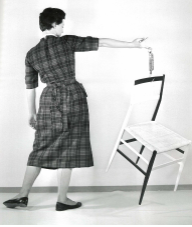
Image source:https://search.creativecommons.org/photos/ef761c34-d101-41af-a106-785b3c194c76bybianca.maggio
Info source:
http://design.designmuseum.org
http://www.primaveragallery.com
For more references, please also visit:http://www.jbdesign.it/idesignpro

Comments are closed.